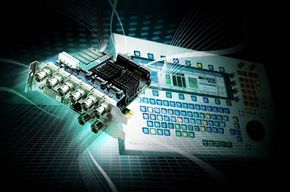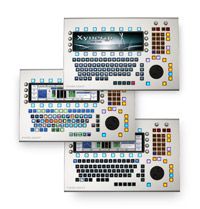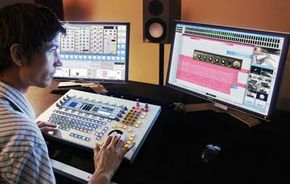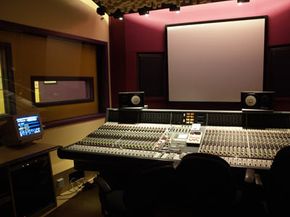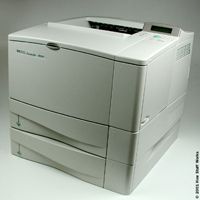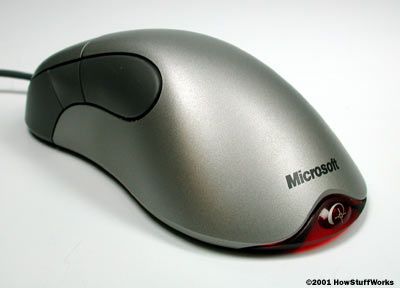In September 2007, an Australia-based company called Fairlight introduced a new digital audio production device named Xynergi. Gadget blogs covered the story and called Xynergi a $28,000 keyboard. Such labels are misleading. In reality, identifying Xynergi as a $28,000 keyboard is like saying the audio system inside a Bentley is a $250,000 radio -- it misses the big picture.
The Xynergi keyboard is part of a desktop media production center package. Fairlight designed Xynergi to meet the needs of small, professional media editing studios. With Xynergi, engineers can capture audio, manipulate individual tracks, add effects, mix multiple tracks together and edit video files. While the device's complexity and price tag mean the average consumer isn't going to buy it, Xynergi might be a good choice for someone with a small recording studio or media companies that need an interface that will let them edit audio and video quickly.
Advertisement
The Xynergi keyboard looks like a large computer keyboard with several extra keys, a few knobs, a dial called a jog wheel and a rectangular color monitor above the main array of keys. Fairlight calls the monitor and the surrounding controls the pad. Xynergi's main key array is in the standard QWERTY layout with a number pad on the right. Engineers use the knobs, keys and jog wheel to manipulate digital audio and video files.
If you've ever seen a professional audio mixing console or video editing control system, you know that there are many more switches, knobs and toggles than you'll find on the Xynergi keyboard. In order to replicate the functions that these large consoles have, Fairlight came up with a clever idea -- self-labeling keys. These are keys that can change functions and key labels depending on what you're trying to do. Each key is a small computer monitor that can display different characters, including letters, symbols and words. Xynergi has an "animate" feature that makes keys flash on and off or change colors during specific tasks. The keys can even display video. As engineers switch from one operating mode to another (for example, moving from a word processing mode to an audio mixing mode), the key labels change and the keys themselves map to new functions.
In this article, we'll take a look at what makes Xynergi tick, examine some of Xynergi's functions and learn more about Fairlight's market strategy for Xynergi, including where you can pick one up and how much it'll set you back.
In the next section, we'll take a closer look at the technology behind Xynergi.
Advertisement
